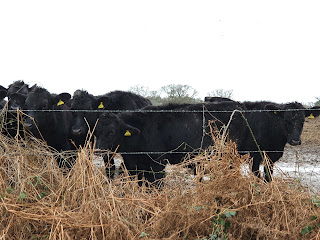Description:
This is a short walk of just over a mile from Holmebridge to the hamlet of East Holme and back. It is along tarmac roadway and so is good for an afternoon stroll on a winter's afternoon but it really comes into is own in summer when the verges present an array of wild flowers with associated insects. In winter the main interest is provided by birds on the water meadows and also in the cow's field where various species like to feeds on insects and earthworms, etc stirred up by the cattle's movement.
Around the East Holme estate are a number of parkland trees; introduced species such as Turkey oak and beech. I understand that there is a Cedar of Lebanon in the Priory park but I am yet to work out which tree it actually is!
It is not a busy road by any means but, as always, one needs to be aware of the potential for traffic. I have encountered more delays through the movement of the cattle between fields than from cars over the years. The road can be a bit messy in places so do not wear your best shoes.
The Route:
From the Wareham west roundabout take the Dorchester Road. After about a mile turn left [signposted East Lulworth] but locals will know this as the turning to 'Holme for Gardens'. Cross the railway and then turn in to the lay-by created when the old road bridge was replaced with a new one and park here, there is usually space. From here cross the road and walk south along the grass verge for about a hundred yards to the turning to East Holme. Look out for lots of wild flowers along this verge in summer.
The walk goes along this road to East Holme
In winter you pass fields where inquisitive cattle will take an interest in you!







Comments
Post a Comment